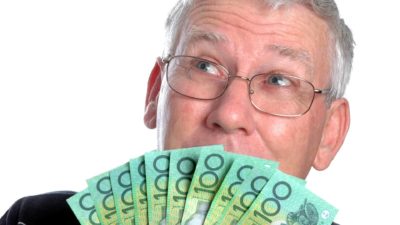Despite optimism earlier this year, evidence has popped up in recent weeks that Australia and the world could be in some strife.
After 10 consecutive rises, the Reserve Bank of Australia left interest rates alone in April to sit back and see how inflation and the economy is going.
But that pause didn’t last long, as new data led to a further two rate hikes in May and June.
Now some experts fear that too much damage has been done.
AMP Ltd (ASX: AMP) chief economist Dr Shane Oliver now thinks the probability of a recession in Australia later this year is at a very high 50%.
“Because central banks never know when they have raised interest rates enough to control inflation they often go too far, pushing the economy into recession,” Oliver said on the AMP blog.
“This was the case prior to recessions in Australia in the early 1980s and 1990s and in the US in the early 2000s and 2008.”
What is a recession and per-capita recession?
A recession is a contraction of the economy, usually measured by how the gross domestic product changes.
Although some countries only start declaring a recession after two or more consecutive quarters of a shrinking economy, Oliver pointed out how this criteria is problematic.
“If GDP falls 1% in one quarter, rises 0.1% the next next and then falls 1% it wouldn’t meet the technical definition of a recession — but most would agree that it is,” he said.
“So, some like the US adopt a wider definition based around a period of contraction as measured by GDP and a range of other economic indicators including industrial production, income and employment.”
In Australia, the hot topic of conversation this year seems to be whether there will be a “per capita recession”.
This is because Australia has strong population growth through immigration, so it is rare for the total GDP to go backwards.
Hence the focus on a per-person metric.
“This is arguably more relevant for individual living standards,” said Oliver.
“GDP per capita has already contracted in the March quarter and most, including the RBA and the government, are forecasting at least a per capita recession.”
Australia is headed for a train wreck
Oliver’s team feels like rate hikes could have been stopped already, but the RBA has now noticeably changed its tone.
“The RBA, which, following signs of increasing upside risks to wages growth – particularly the higher than expected increase in minimum and award wages at a time of low productivity growth – appears to have become more hawkish and be giving less weight to keeping the economy on an ‘even keel’.”
Everyone loves a pay rise. However, in times of rampant inflation it can be dangerous for the economy.
“When wages are simply chasing inflation higher as we saw in the 1970s, it can lead to a wage price spiral, which perpetuates high inflation as companies raise prices to maintain profits in response to stronger wages,” said Oliver.
“As a result, the second round response to the initial spike in inflation of catch-up wage growth risks entrenching high inflation.”
Oliver’s team has calculated the 50-50 chance recession later in the year because of the pressure on households.
“Consumer spending is almost certain to start going backwards later this year as the 4%-plus cash rate will push debt servicing costs into record territory as a share of household income,” said Oliver.
“On the RBA’s analysis 15% of households with a variable rate mortgage, about 1 million people will be cash flow negative by year end at a 3.75% cash rate — and we are now well beyond this.”
What will happen to my ASX shares?
So if you have a portfolio of ASX shares, what’s going to happen?
According to Oliver, history shows recessions trigger falls of 20% or more — a bear market — because of plummeting company profits.
There is a saving grace this time round though.
“Share markets are still 8% or so down from their 2021/early 2022 highs so the risk of recession is arguably partly still factored into markets, which may limit the extent of falls if a recession does eventuate.”
This is all very stressful, but Oliver reminded investors to not panic sell.
“For superannuation members and most investors the best approach is to stick to an appropriate long-term investment strategy to take advantage of the rising long-term trend in share markets, given the difficulty in trying to time short-term swings.”








